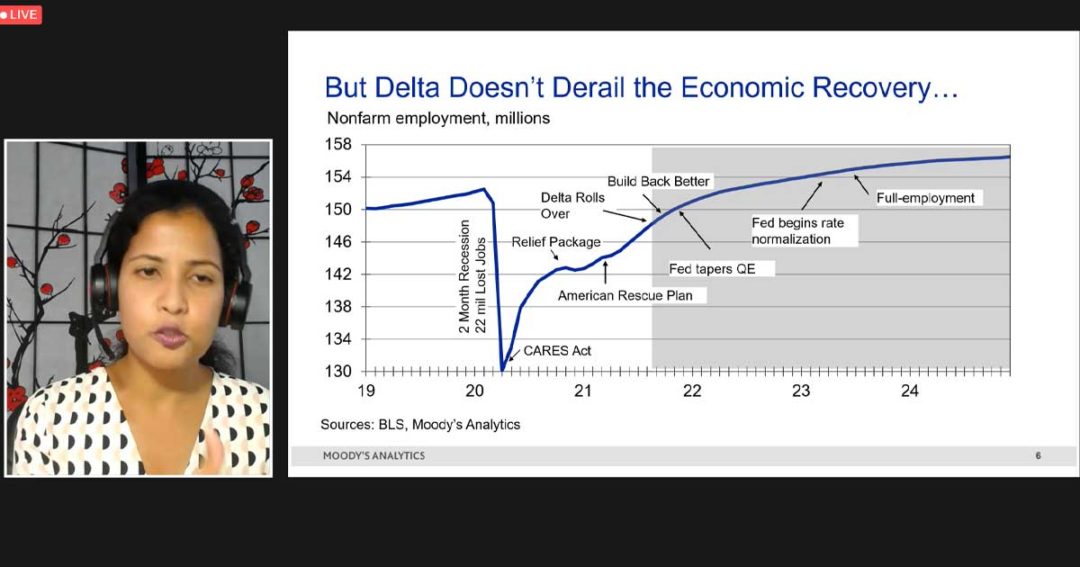
Economy ‘normalizes’ to reality of variants
Labor market struggles, higher inflation only temporary, Moody economist says.
Labor market struggles, higher inflation only temporary, Moody economist says.
Credit unions can expect a mixed lending forecast over the next two years as the U.S. economy continues to normalize in a COVID-centric world, according to Sohini Chowdhury, director and senior economist at Moody Analytics, who addressed the 2021 CUNA Operations & Member Experience Council and CUNA Technology Council Virtual Conference Thursday.
Perhaps the most obvious sign of the current economic challenges—and the biggest obstacle for credit union human resource departments and people leaders—is the proliferation of “help wanted” signs and the disruptions employee shortfalls are causing.
While the U.S. unemployment rate was 5.2% in August, the real unemployment rate (which includes the underemployed and discouraged workers) was 8.8% as many capable workers remain on the sidelines with COVID-19 concerns and responsibilities.
“If people are not looking for work, they are not counted as unemployed,” Chowdhury says. “The pandemic has forced a whole group of people to step out of the labor force.”
The delta variant and other potential variants have hindered consumer spending and will continue to do so, slowing nonfarm employment job growth and the overall economy in the short-term, Chowdhury says.
But the impact is not uniformly distributed as some regions, including the Southeast U.S., experiences more economic fragility.
“Because the country is so heterogenous, it’s important to look at each region’s economic dynamics,” Chowdhury says. “Your regional outlook might be different than the national average outlook.”
Through a longer lens, the U.S. economy is on a strong upward trajectory. “Lawmakers and decision-makers know we will face different variants, but they will have less economic impact as more people become vaccinated,” she says.
The current inflationary environment, driven by current labor issues and accompanying supply chain stress, is transitory rather than structural, according to Chowdhury. “Bond investors expect consumer price index inflation to be in line with the Fed’s inflation target in the long-run.”
An anticipated rise in interest rates would will slow fixed-rate lending, such as auto loans and some mortgages, in the short term, she says. Credit card portfolios are poised for strong balance growth, but slower new account growth.
Delinquencies have been low during the pandemic as many borrowers have been largely carried by lender accommodations and government policy and fiscal support. “It’s important to consider how delinquencies will perform without lender and government support,” Chowdhury says.
While delinquency rates are expected to rise in 2022, a normalized lending environment is another transitory factor that brings more workers back to the job market, she says.
